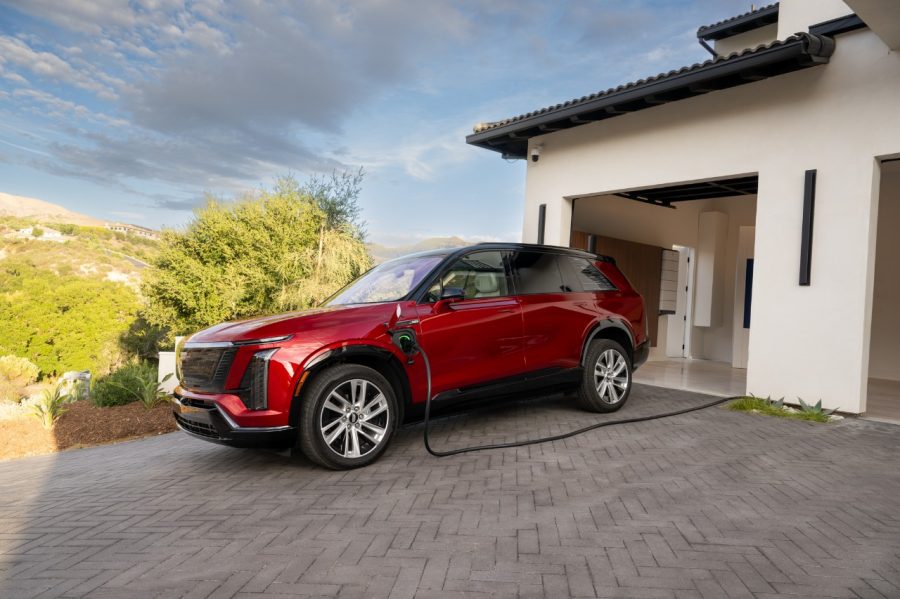Sign up for daily news updates from CleanTechnica on email. Or follow us on Google News!
The extended-range electric car — otherwise known as an EREV — is the hottest part of the new car market in China. Chinese authorities have always included plug-in hybrids (PHEVs) in their definition of “new energy vehicles” (NEVs), whereas in most other countries, including the US, they have been considered a sideshow and perhaps a distraction to the real challenge of transitioning away from cars and trucks powered by molecules to zero-emission vehicles powered by electrons.
Over the years, CleanTechnica has also strongly favored “real” EVs over PHEVs. Why have a car with two powertrains, the extra weight that second power train entails, and the continued maintenance needed for an internal combustion engine when you can have the real deal — a battery-powered car that never needs to get within 10 miles of a gas station? Much of our thinking was influenced by Tesla, the electric car company that was lighting up the sales charts worldwide. “Instead of dipping a toe in the pool, jump, the water’s fine,” was our motto.
But a funny thing happened on the way to the EV future. The price of EVs remained stubbornly high and some people who did take the electric car plunge discovered there were drawbacks to electric cars that maybe they hadn’t fully considered. Range in winter and on long-distance highway trips was often less than expected. To make matters worse, charging away from home was often a frustrating experience. Even the excellent Tesla Supercharger network can be of little use far from major transportation routes. Getting stuck away from home with a dead battery and needing to call a tow truck is nobody’s idea of fun. Even if it seldom happened, the fact that it might happen was enough to keep many people from buying an EV.
China is a leader in battery swapping technology. Need a charge? Don’t wait 30 minutes or more for your battery to be replenished. Drive into a battery swapping station and drive out five minutes later with a fully charged battery. It’s a great idea, but once again, like the Tesla Supercharger network, it is only useful if there is a swapping station nearby. Drivers are in love with the idea they can go anywhere there is a road at any time. Being restrained by access to charging or battery swapping just spoils the whole idea that makes the personal vehicle such a powerful allure to millions of drivers. Not many of us wake up in the morning and decide to skip work and drive the Pacific highway from San Diego to Seattle, but knowing that we could is part of the allure of having our own personal car.
Extended-Range Electric Car Sales In China
The South China Morning Post reports that EREV sales are ramping up quickly in China. With a combination of both an electric motor and a gasoline engine, these cars can typically travel about 600 kilometers (370 miles) before needing to stop for recharging or refueling. BYD has one model that has a total combined range of 2,100 kilometers (1,305 miles). If that isn’t enough range, you may want to donate your bladder to science!
Davis Zhang, a senior executive at Suzhou Hazardtex, a supplier of specialized batteries, tells SCMP that a typical EREV costs about 30,000 yuan (US$4,220) less than a fully electric car. All major EV manufacturers in China except Nio have either developed EREVs or announced plans to do so soon to meet customer demand. “It is a big twist in China’s EV sector because extended range technology was once shunned by all major carmakers a decade ago for its poor market outlook,” said Gao Shen, an independent analyst in Shanghai. “Most companies are now taking a middle road in developing EREVs due to their rising popularity among Chinese consumers.” Fully electric cars are still likely to be the future of the industry, he added.
Carmakers delivered 623,000 EREVs in mainland China last year, according to data released by the China Association of Automobile Manufacturers — a 173% jump from a year earlier. Last month, 114,000 EREVs were delivered in China — 10.2% of the EV market. “More customers choose to buy [these] EVs because they are cheaper and offer a longer driving range,” said Zhao Zhen, a sales director at Shanghai-based dealer Wan Zhuo Auto. “Sales momentum is set to quicken over the next three years, given the poor state of charging infrastructure, particularly in rural areas.”
Over the past two months, at least three Chinese EV makers have unveiled their ambition to build EREVs. Zeekr, the premium EV maker owned by Geely, said in August that the firm will design and build its first hybrid models to grow its market share. Avatr Technology, the EV unit owned by Changan Automobile, is pursuing the same plan. Chinese rivals to industry giant Tesla are not sitting idle. Chinese technology news site 36kr reported that Xpeng was off to a smooth start in developing its first EREV after securing supply contracts with key car component vendors.
Li Auto Saw This Coming
Li Auto, a Beijing-based assembler of premium EVs, spearheaded the move to build EREVs, after its founder, Li Xiang, said range anxiety would be the primary concern among Chinese drivers when weighing their first EV purchase, according to Huang Mingming, founding partner of Future Capital, which was the first institutional investor to back Li Auto in 2015. Two years ago, in an interview with the SCMP, Huang said the idea of EREVs was deemed by other venture capitalists to be a half-hearted attempt to support the automotive sector’s electrification drive. But it was pitched as a solution to the challenge of inadequate charging infrastructure and battery technology constraints, he added.
Li Auto designs and manufactures only EREVs. Last year, it delivered 376,030 vehicles to Chinese buyers, 182% more than in 2022. Those deliveries represented 60% of the country’s total EREV sales. BYD, Volkswagen, Toyota, and other foreign automakers sold 478,000 plug-in hybrid cars to Chinese buyers in July — about 43% of total EV deliveries — according to data published by the CPCA. That is up from 33% in the same month last year. China accounted for 65% of global sales of electric cars — comprising pure electrics and plug-in hybrids — in the first half of this year, according to the China Passenger Car Association. China’s EV sales outpaced the sale of conventional cars for the first time in July.
The Takeaway
We have to admit we were wrong about plug-in hybrids and how much charging anxiety impacts people shopping for electric cars. We roundly critiqued companies for designing new platforms that could accept either gasoline engines or electric motors — or both. We said they were too timid and would soon be left behind. We were wrong. For years, we lambasted Toyota for slowing the EV revolution by refusing to offer battery electric models. Although, to be fair, the company engaged in some underhanded marketing by calling its ordinary hybrids “self charging electric cars,” a term that was deliberately misleading and confusing to many.
The truth is that to the extent a hybrid or plug-in hybrid has lower total emissions than a conventional car or truck, it is a step toward addressing pollution from motor vehicles, just a smaller one than a battery electric vehicle would make possible. Perhaps a half a loaf truly is better than none. Ford and GM are now talking about building more hybrid and plug-in hybrid models. Ford in particular has been stunned by the demand for the hybrid version of its Maverick midsize pickup truck. Volkswagen says it is developing a new plug-in hybrid powertrain, which according to the latest reports may find its way into the new vehicles coming from the Scout division. When it was first introduced, the new brand from Volkswagen was focused exclusively on manufacturing battery electric cars.
The odd man out is Tesla, which eschews internal combustion engines entirely, even of the range extender variety. They can respond to price competition by lowering the sticker price of their cars, but they cannot compete with plug-in hybrids or extended range EVs because they simply don’t have the ability to do so.
So, for EV advocates, where does that leave us? Reading the tea leaves, it appears that plug-in hybrids will enjoy a certain amount of sales success for at least the next two to three years. During that time, Goldman Sachs says battery prices will be cut in half. Also, the number of chargers will increase as more non-Tesla EVs gain access to the Supercharger network. In addition, the programs put in place by the Biden administration should lead to a dramatic increase in public chargers in the US, further reducing charging anxiety. There is the possibility that by the time Ford, GM, Volkswagen, and others bring PHEVs to market, their star will be in retrograde and the EV revolution will be in full swing again.
The upshot is, this is a tough time to be the chief executive of a car company. Predicting the future is always fraught with danger, but never more so than in the car business today.

Chip in a few dollars a month to help support independent cleantech coverage that helps to accelerate the cleantech revolution!
Have a tip for CleanTechnica? Want to advertise? Want to suggest a guest for our CleanTech Talk podcast? Contact us here.
CleanTechnica uses affiliate links. See our policy here.
CleanTechnica’s Comment Policy



